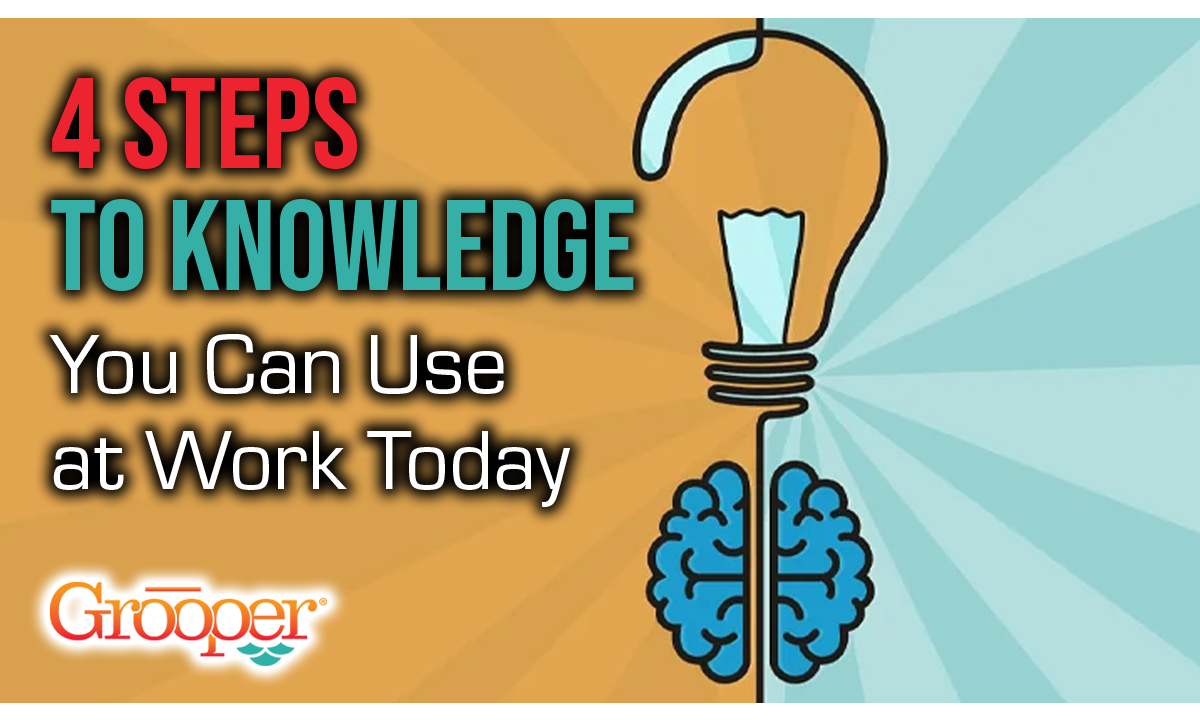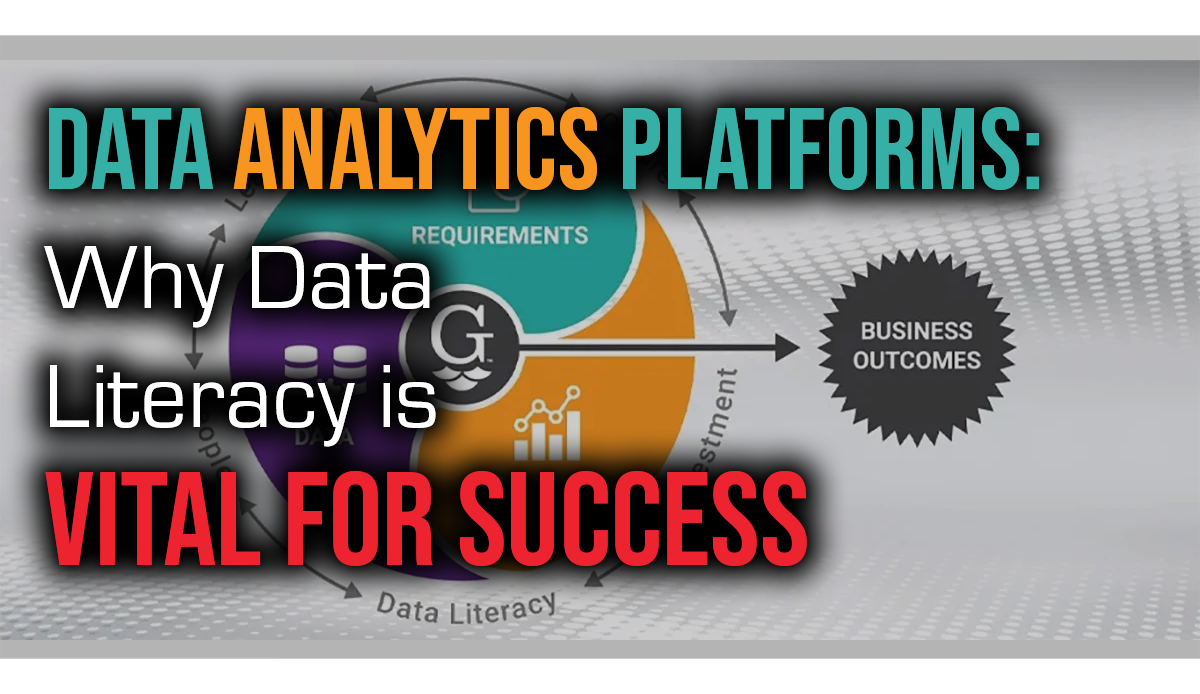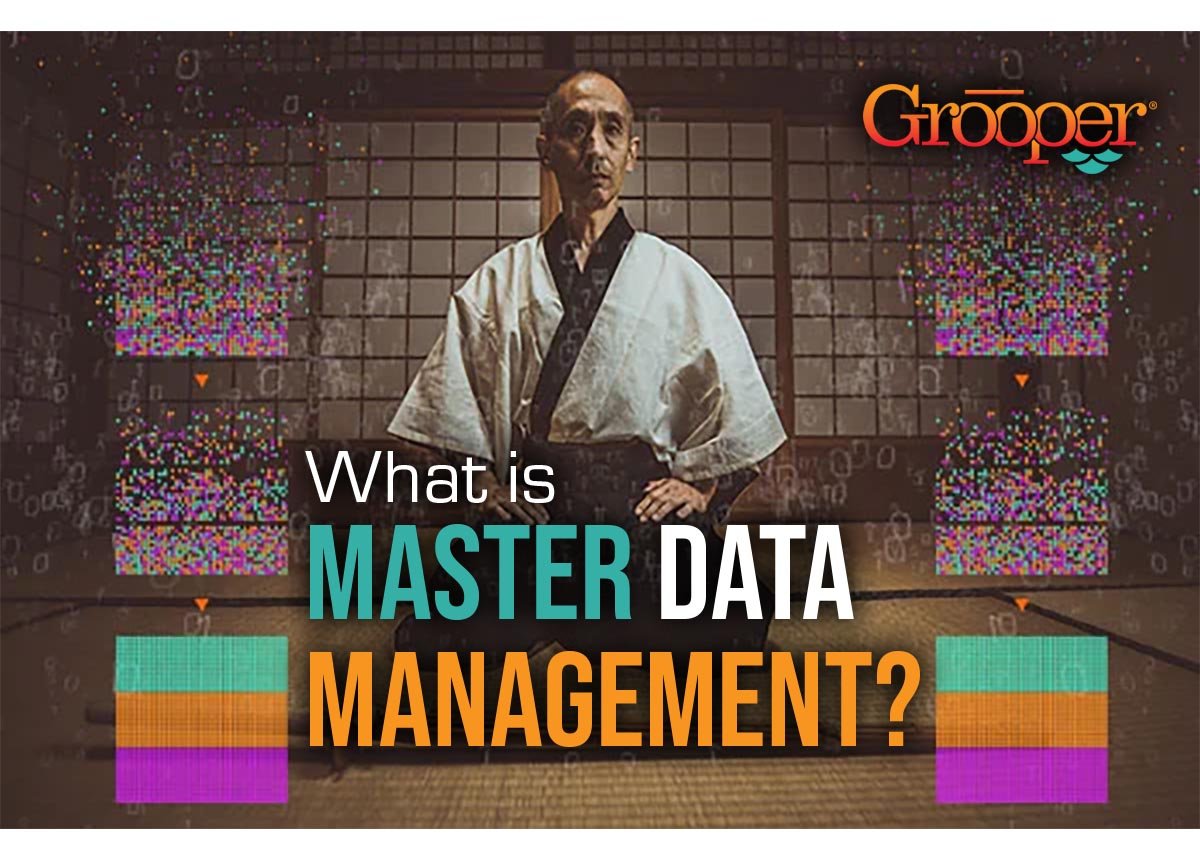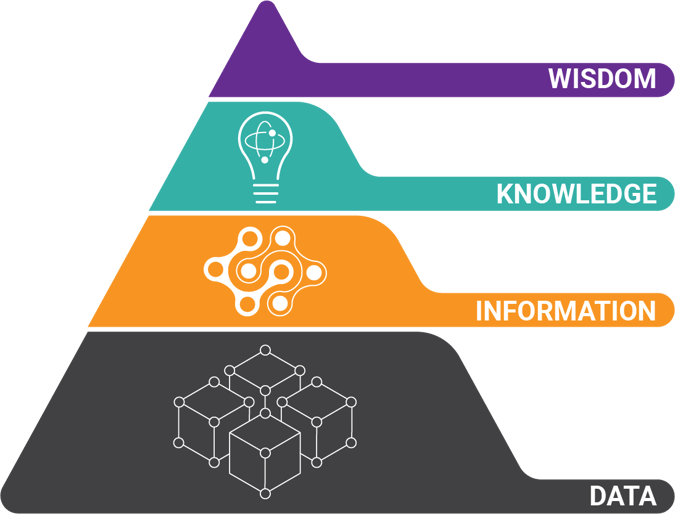Increase Wisdom by Learning How to Create Knowledge
There is a logical hierarchy for transforming data into wisdom. You need to understand each step to become not just smarter — but wiser.
I’m going to show you the relationship around the 4 steps to knowledge:
- Data
- Information
- Knowledge
- Wisdom
We’ll Use the Example of Buying Software to Show the Steps to Knowledge
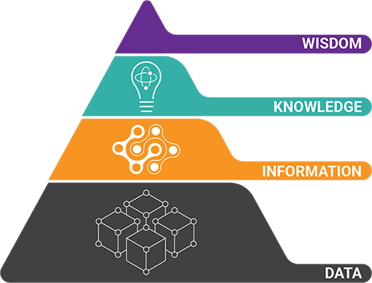
To make the purchase decision, you go through a process of turning various information inputs from multiple sources into a clear, commonsense choice. The better your process, the better your decision.
In fact, by learning how to create knowledge, you add even more value to decisions.
Let’s divide the purchasing decision into the 4 stages – data, information, knowledge, and wisdom.
1. Data
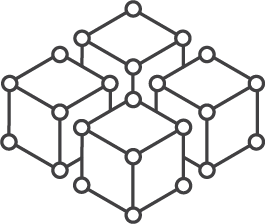 Data is a collection of discrete facts about events. It is always the starting point to achieving wisdom.
Data is a collection of discrete facts about events. It is always the starting point to achieving wisdom.
Think of raw numbers and text that represent a software’s capabilities or features. A good illustration of data is stacks of unorganized paper containing logging or measurement information. Or you could picture many Excel spreadsheets filled with thousands of rows and columns of numbers.
In the example of buying software, data can be:
- The prices of the different software available
- The quantity limit that the software license allows you to use daily or annually
- Processing power
As great as all of that raw data is, raw data by itself doesn’t provide meaningful information...
2. Information
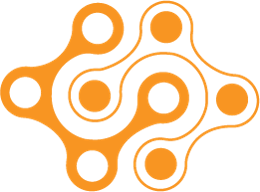 Information is data with context. Who, what, when, and where questions turn data into information.
Information is data with context. Who, what, when, and where questions turn data into information.
Examples of information are:
- When will we ever need a license for that much volume?
- What were the updates made in the recent software version?
- Knowing what event a date represents. Did it happen recently - or 10 years ago?
- That a string of digits is an invoice or social security number, or even a product's part number
- Understanding that certain strings of words represents particular clauses in a contract
In the steps to knowledge, understanding the meaning of data is information. Information is one of the core elements of Information as a Second Language and business-driven analytics.
3. Knowledge
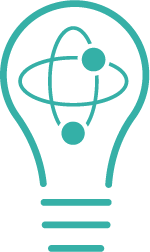 Knowledge comes from your experiences, ideas, insights, values, and beliefs. By evaluating information, data becomes knowledge.
Knowledge comes from your experiences, ideas, insights, values, and beliefs. By evaluating information, data becomes knowledge.
In our earlier example of purchasing software, armed with knowledge, you will understand how particular features help solve a problem.
Asking deeper “how” questions like “How is this information relevant to other core objectives?” provides additional layers of knowledge. Think of the steps to knowledge as the connections and relationships between different pieces of information. Maximizing knowledge is entirely based on piecing together more information.
Or if you stumble upon client social security numbers, you can ask deeper questions. The questions can be: "why is this here" and "is there a risk this sensitive information could be found by others and misused?"
More data = More information = More knowledge = Better decision-making capability
4. Wisdom
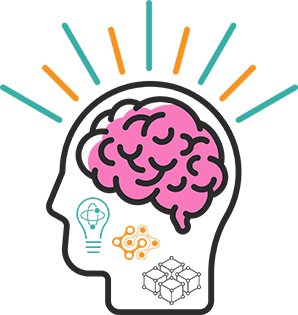 When you decide what software to purchase, you’ve applied and implemented the knowledge you’ve gained.
When you decide what software to purchase, you’ve applied and implemented the knowledge you’ve gained.
The deeper your knowledge, the better your decision will be.
Wisdom is essentially the ability to make a strong commonsense judgement and back it up with solid reasoning.
In our example of buying software, you can use wisdom to balance software cost versus the potential for your company's benefit.
Or in our other example of accidentally finding social security numbers, wisdom helps you also know that proper employees in your company informed of your discovery. In addition, you feel that the data might need to be redacted.
Steps to Knowledge - Wrapping it Up:
- Data is the foundation of information
- Connections between information create the steps to knowledge
- The application of knowledge is wisdom
- Use these four steps as a tangible way to increase wisdom and improve the decision-making process for you and your organization

About the Author: Brad Blood
Senior Marketing Specialist at BIS
